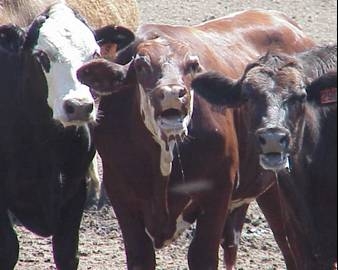“Is it too hot to work calves?”
“Is it too hot to work calves?”
“Is the temperature and humidity going to kill these cattle this afternoon if we work them?”
Those in the cattle business know those questions and thoughts all too well, especially with most of us having off farm careers and jobs now. An informed decision is always the best. Thanks to a collaborative effort between the USDA, Oklahoma State University, Kansas State University, the University of Oklahoma, and the weather co-op known as Mesonet, we now have a National Cattle Comfort Index guide and mapping program readily available on the internet.
The program was funded by the USDA and essentially produces three base maps:
- Cattle Comfort Index at 100% Solar Radiation
- Cattle Comfort Index at 60% Solar Radiation
- Cattle Comfort Index at 20% Solar Radiation
The maps are created automatically every 60 minutes, and users select a map from the above based on the cloud cover at their particular location within the US. Maps also generated to aid producers include:
- Air Temperature at 1.5 meters
- Wind Speed at 10 meters
- Percent Relative humidity at 1.5 meters
- Solar Radiation at 100, 60, and 20 percent levels
The authors recommend using the 100% solar radiation map for determining maximum stress level in the summer months and the 20% solar radiation map for the winter months. The creators provided the following chart to use as a guide:
While every situation (be it climate, cattle breed, cattle type (dairy or beef), cattle age) and farm/ranch is different, this resource is a great guide to follow and use in your management decisions. The monitor can be found at: http://cattlecomfort.mesonet.us It includes the maps, historical data and great “How to” guide.
The USDA Meat Animal Research Center offers additional information on the impact of heat stress on cattle. They suggest the following actions to avoid heat stress:
- Monitor the weather
- Ensure there are no restrictions to air movement, such as hay storage or wind breaks, where cattle are housed or being worked.
- Check stock tanks to ensure adequate water. Make sure to have adequate access for multiple animals to drink at one time. Check reserves, pumps, and all parts of the watering system. Check the refill rate of the stock tanks.
- Consider additional water tanks if space and tank refill is not adequate. Remember, water intake decreases when water temperature is over 80 degrees. Buried water line are preferred so the water is cool when it reaches the tank.
- Remove manure buildup under man-made shade structures. Thick manure packs are a heat source; manure buildup should not exceed 1 inch in depth.
Learn to identify the signs of heat stress in cattle. The most prominent sign of heat stress is breathing rate and drooling or foaming at the mouth. Breathing rates become more rapid as heat stress increases. Breathing also becomes more labored. Cattle will breathe with an open mouth or with the tongue protruding from the mouth. Cattle will also drool and have foaming drool from the mouth. As heat stress progresses cattle may reduce or stop drooling and respiration rates will decrease, however they will still be pushing from the flanks as they breath, have their tongue out, and will begin to walk with their head down.
If we are working cattle and most of the herd begins to show signs of heat stress, precautions should be taken to allow cattle to cool down. Stop handling cattle and allow access to shade in an area with unrestricted air movement.
More information on recognizing and dealing with heat stress in cattle can be found at the Meat Animal Research Center’s web site. Click Here.
Keep these tools and tips in mind as you make cattle handling decisions in the hotter months of the year.
By: Scott Sell, Research Associate, Clemson University Edisto Research and Education Center, and Brian Beer, Area Livestock Extension Agent, Clemson Cooperative Extension


